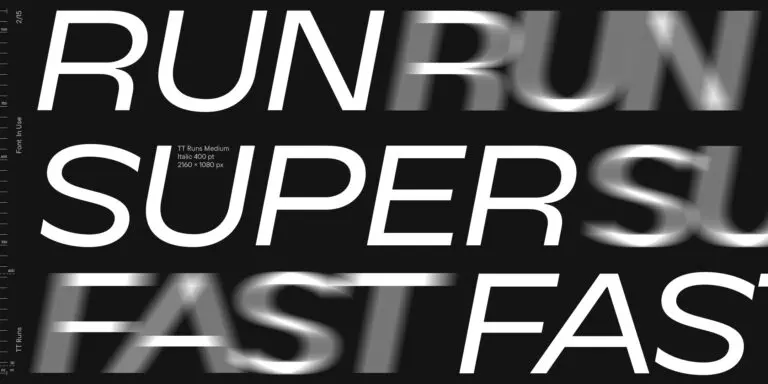Type foundries and fonts styles are fundamental elements that shape the visual language of design. As a designer, understanding the role of type foundries and exploring different font styles can unlock a world of creative possibilities. In this guide, we will delve into the realm of type foundries and fonts styles, highlighting their significance and providing insights on how they can inspire and enhance your design projects.
- Exploring Type Foundries: Type foundries are establishments or individuals dedicated to designing, developing, and distributing fonts. They are the creative powerhouses where typographers and designers craft unique typefaces. Here’s why type foundries are invaluable:
- Creative Diversity: Type foundries offer a wide range of typefaces with diverse styles, from classic and elegant to modern and experimental. They curate and develop fonts that cater to different design aesthetics, industries, and project requirements.
- Expert Craftsmanship: Type foundries prioritize the artistry and technical precision of font design. Their fonts undergo meticulous refinement, ensuring optimal legibility, aesthetics, and technical performance.
- Typography Expertise: Type foundries often have experienced typographers who possess deep knowledge and understanding of letterforms, proportions, and typographic principles. Their expertise ensures that the fonts they produce are meticulously designed and well-suited for various design applications.
- Importance of Fonts Styles: Fonts styles play a crucial role in conveying the desired message, setting the tone, and evoking specific emotions in design projects. Here’s why fonts styles are significant:
- Visual Identity: Fonts styles contribute to establishing a brand’s visual identity. Whether it’s a sleek and modern sans-serif font for a tech company or an elegant and ornate serif font for a luxury brand, the chosen font style helps communicate the brand’s personality and values.
- Readability and Hierarchy: Font styles impact the readability and hierarchy of information. Choosing appropriate font styles for different elements such as headings, body text, and captions ensures clear communication and enhances the user experience.
- Emotional Connection: Fonts styles have the power to evoke emotions and create a specific atmosphere. For instance, bold and impactful display fonts can convey energy and excitement, while delicate script fonts can evoke elegance and romance.
- Design Consistency: Consistent use of font styles throughout a design project maintains visual coherence and reinforces the overall aesthetic. Well-chosen font styles contribute to a cohesive and polished design.
- Exploring Font Styles: There is an extensive range of font styles available to designers. Here are some popular categories:
- Serif Fonts: Serif fonts have small decorative lines or “serifs” attached to the ends of characters. They are often associated with tradition, formality, and elegance. Serif fonts are commonly used for body text in print materials such as books and newspapers.
- Sans-Serif Fonts: Sans-serif fonts lack serifs and offer a clean and modern aesthetic. They are versatile and widely used for digital interfaces, branding, and contemporary designs. Sans-serif fonts are often chosen for their readability and simplicity.
- Script Fonts: Script fonts mimic handwriting and calligraphy styles. They add a touch of elegance, creativity, and personalization to designs. Script fonts are often used for logos, invitations, and other design elements that require a more decorative and expressive touch.
- Display Fonts: Display fonts are highly stylized and impactful. They are designed to grab attention and are commonly used for headlines, titles, and large-scale typography. Display fonts come in a variety of styles, ranging from bold and geometric to ornate and decorative.
- Pairing Fonts Styles: Pairing font styles is an art that can elevate the visual appeal of your designs. Here are some tips for effective font pairing:
- Contrast: Pair fonts with contrasting styles to create visual interest and distinction. Combining a bold and impactful display font with a clean and simple sans-serif font can create a dynamic and balanced composition.
- Complementarity: Choose font styles that complement each other in terms of aesthetics and mood. Consider their proportions, x-heights, and overall visual harmony.
- Hierarchy: Establish a clear hierarchy by using different font styles for different elements. Select a distinct font style for headings, subheadings, and body text to create visual hierarchy and guide the reader’s attention.
- Consistency: Maintain consistency within your design by limiting the number of font styles used. Using too many font styles can create visual clutter and diminish the overall cohesion of the design.
Conclusion:
Type foundry and fonts styles are essential components of design, offering a vast array of choices for designers to express their creativity and effectively communicate their messages. By exploring type foundries, you gain access to expertly crafted fonts that bring uniqueness and quality to your projects. Understanding fonts styles enables you to select typefaces that resonate with your design objectives, establish visual identity, and evoke the desired emotions. Embrace the diverse world of fonts styles, experiment with pairings, and let typography become a powerful tool in your design toolkit.

